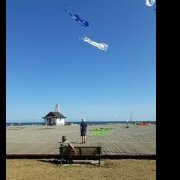Selling England By The Pound
-
Recently Browsing 0 members
- No registered users viewing this page.
-
Topics
-
-
Popular Contributors
-
-
Latest posts...
-
7
The Great Trump Tomato Crisis
Trump wants American farmers to be able to Ketchup. -
-
45
Tourism Indian Tourists Defy Trends, Boost Thai Arrivals Amid Airline Woes
Any bargirl will speek Indian people stinks. -
4
Handle Shaking of Aerox 155
Depending how big it is, and where it is placed. Seen some few 50L boxes places to far back which to catch air at 50km+ OP when do the shaking start at what speed? -
4
Handle Shaking of Aerox 155
How old is the bike and total km? How big is the box behind? Picture? -
10
Retirement Extension? Nah, I’m DTV Now.
That's amazing. If you opted for the DTV over the retirement visa, are there loopholes here that may be closed in the future? Also I wonder about which countries/embassies are more likely to grant the DTV. I have heard the rejection rate may be as high as 30%. And since you lose your money without explanation if you are rejected, that makes the DTV a bit of a gamble.
-
-
Popular in The Pub






.thumb.jpeg.d2d19a66404642fd9ff62d6262fd153e.jpeg)






Recommended Posts
Create an account or sign in to comment
You need to be a member in order to leave a comment
Create an account
Sign up for a new account in our community. It's easy!
Register a new accountSign in
Already have an account? Sign in here.
Sign In Now